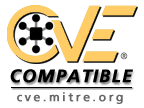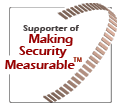Executive Summary
| Summary | |
|---|---|
| Title | Fortigate UTM appliances share the same default CA certificate |
| Informations | |||
|---|---|---|---|
| Name | VU#111708 | First vendor Publication | 2012-11-02 |
| Vendor | VU-CERT | Last vendor Modification | 2012-11-02 |
| Severity (Vendor) | N/A | Revision | M |
Security-Database Scoring CVSS v3
| Cvss vector : N/A | |||
|---|---|---|---|
| Overall CVSS Score | NA | ||
| Base Score | NA | Environmental Score | NA |
| impact SubScore | NA | Temporal Score | NA |
| Exploitabality Sub Score | NA | ||
| Calculate full CVSS 3.0 Vectors scores | |||
Security-Database Scoring CVSS v2
| Cvss vector : (AV:N/AC:M/Au:N/C:P/I:P/A:N) | |||
|---|---|---|---|
| Cvss Base Score | 5.8 | Attack Range | Network |
| Cvss Impact Score | 4.9 | Attack Complexity | Medium |
| Cvss Expoit Score | 8.6 | Authentication | None Required |
| Calculate full CVSS 2.0 Vectors scores | |||
Detail
Vulnerability Note VU#111708Fortigate UTM appliances share the same default CA certificateOverviewFortigate UTM appliances that support SSL/TLS deep packet inspection share the same self-signed Fortigate CA certificate and associated private key across all devices. The private key, which has been compromised, allows attackers to create and sign fake certificates. Description
Impact
Solution
Vendor Information (Learn More)
CVSS Metrics (Learn More)
References
CreditThanks to Bitwiper for reporting this vulnerability. This document was written by Jared Allar. Other Information
FeedbackIf you have feedback, comments, or additional information about this vulnerability, please send us email. |
Original Source
| Url : http://www.kb.cert.org/vuls/id/111708 |
CWE : Common Weakness Enumeration
| % | Id | Name |
|---|---|---|
| 50 % | CWE-310 | Cryptographic Issues |
| 50 % | CWE-295 | Certificate Issues |
CPE : Common Platform Enumeration
| Type | Description | Count |
|---|---|---|
| Hardware | 1 | |
| Hardware | 1 | |
| Hardware | 1 | |
| Hardware | 1 | |
| Hardware | 1 | |
| Hardware | 1 | |
| Hardware | 1 | |
| Hardware | 1 | |
| Hardware | 1 | |
| Hardware | 1 | |
| Hardware | 1 | |
| Hardware | 1 | |
| Hardware | 1 | |
| Hardware | 1 | |
| Hardware | 1 | |
| Hardware | 1 | |
| Hardware | 1 | |
| Hardware | 1 | |
| Hardware | 1 | |
| Hardware | 1 | |
| Hardware | 1 | |
| Hardware | 1 | |
| Hardware | 1 | |
| Hardware | 1 | |
| Hardware | 1 | |
| Hardware | 1 | |
| Hardware | 1 | |
| Hardware | 1 | |
| Hardware | 1 | |
| Hardware | 1 |
Nessus® Vulnerability Scanner
| Date | Description |
|---|---|
| 2012-11-19 | Name : The SSL certificate for this service was signed by a certificate authority (C... File : ssl_fortigate.nasl - Type : ACT_GATHER_INFO |
| 2012-08-07 | Name : The SSL certificate for this service was signed by a CA whose private key is ... File : ssl_cyberoam.nasl - Type : ACT_GATHER_INFO |
Alert History
| Date | Informations |
|---|---|
| 2014-02-17 12:07:30 |
|
| 2012-11-29 21:21:46 |
|
| 2012-11-29 21:20:28 |
|
| 2012-11-14 17:22:17 |
|








